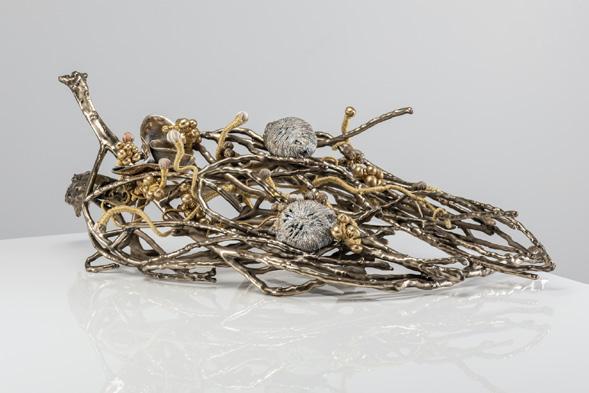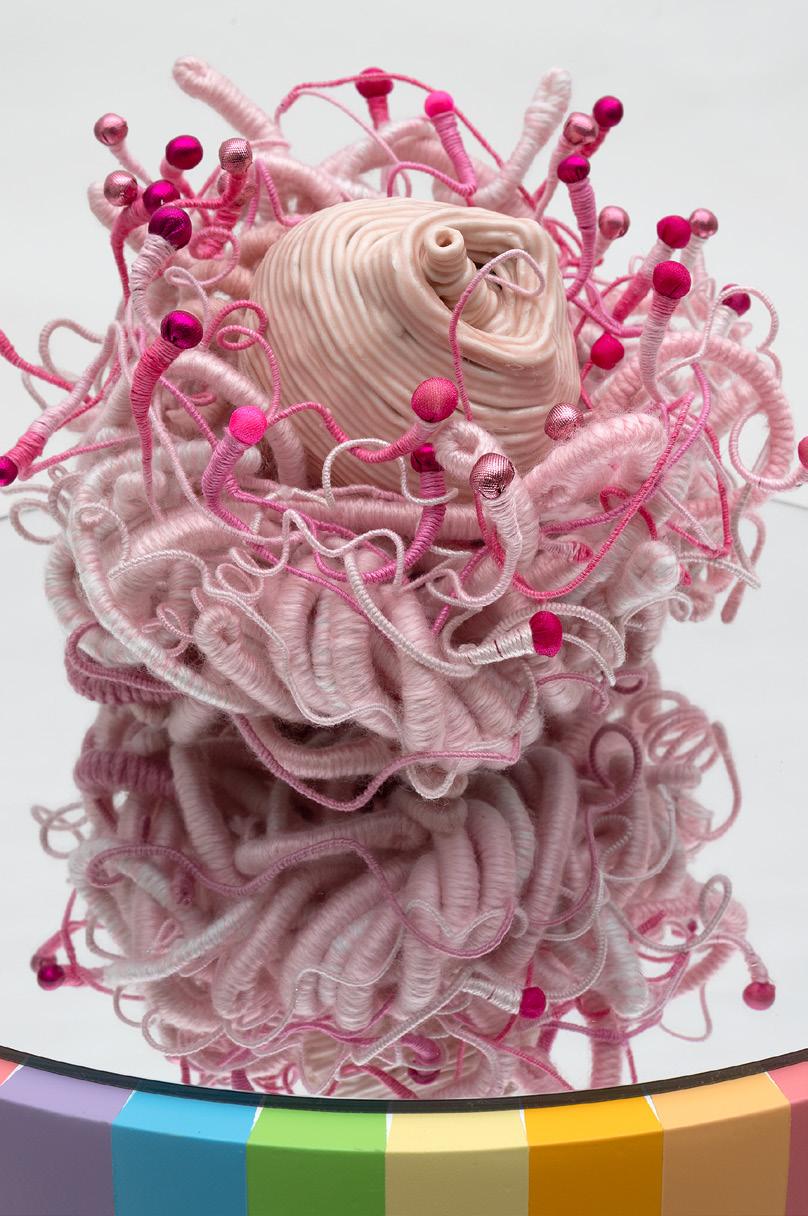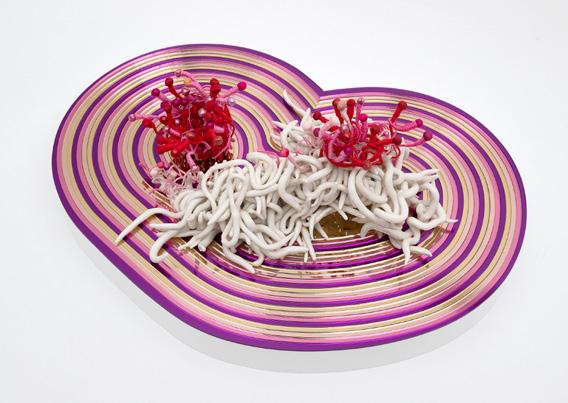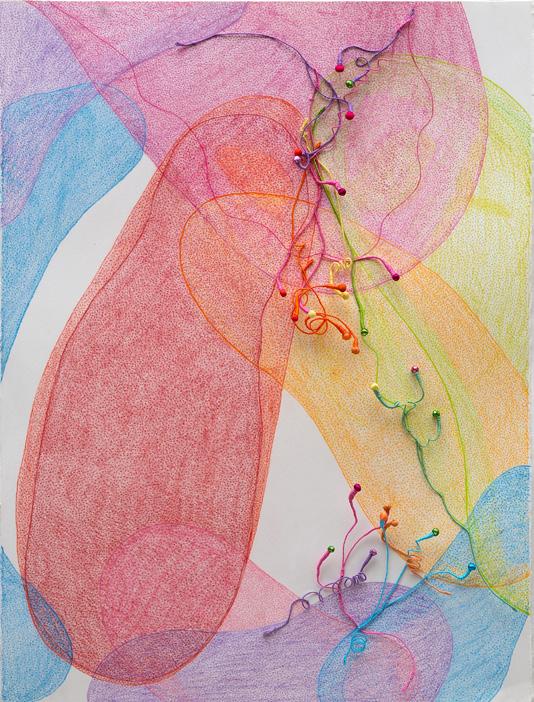
6 minute read
Hiromi Tango: New Now
By Dr Patricia Jungfer
Hiromi Tango is a Japanese Australian artist whose artistic practice focuses on the exploration of human emotions, informed by research in the area of the emotional science of colour, neuroscience and neuroplasticity.
2019-2020 has been a time of substantive change in the Australian community and the world at large. In late 2019, Australia was overwhelmed with bush fires which devastated large areas of Australian native land and many communities. Subsequent to this, Australia and the world were assailed by a pandemic, not seen on this scale since the early 20th century, which has vastly changed our experiences of who we are and how our society operates.
Hiromi Tango's current body of work, New Now, is a response to this dramatic time in history and the continued expression of her own journey of self-discovery. Hiromi’s frankness in sharing this emotional journey in her art with the community is empowering and may enable others who engage with her work to acknowledge their developmental experiences and how these impacts on their engagement with others. The exhibition New Now incorporates works that are related to Hiromi's exploration of her Japanese identity and important developmental relationships. Hiromi as an immigrant with roots still in Japan expresses the anxiety of not being able to physically engage with her family during the pandemic. The impact of this barrier is strongly felt by many in the community as we, a nation of travellers are unable to easily explore our cultural roots and maintain physical connections that we may have formed with others across the seas. Hiromi in Nature Nurture: Roots began the journey of exploring her roots and connections. This exploration of who she is, where she has come from and who she is now. The new work, New Now, asks us to reflect and think about what has happened to us as a society and as individuals in this time of change. As is often the case, Hiromi encourages us to see emotional pain and anxiety as a time of growth. Research of neuroplasticity recognises that environmental factors will trigger neuroplastic brain changes, and even those who are not resilient can be taught resilience. Artists throughout the centuries have documented society’s and their own experiences of living through a pandemic. The earliest recorded pandemic was in 430 BC in Athens during the Peloponnesian war, where between one third to two thirds of Athens' citizens died. The devastating effect of a pandemic at a time of war has been well documented in these early records of the Peloponnesian wars. In the 14th to 16th centuries, pandemics (the plague being the most known) was portrayed as an invisible enemy, which communities tried to make sense of. Pandemics were seen as a random destructive force where artists portrayed the plague as a punishment from God.
Societies evolved and by the 17th to 18th century, artist characterised those who had the plague as sufferers. The audience was encouraged to empathise with the victims of the plague, and it was no longer seen as punishment, but as an experience that descended upon a Edvard Munch. In the early 20th century with the Spanish flu, Munch in his self-portrait portrayed himself with the open mouth scream while recovering from the Spanish flu.
How individuals and societies cope with a pandemic has been extensively researched. In the late 20th century work in the area of the psychological reactions to SARS, the swine flu and the Mediterranean respiratory syndrome, looked at how individuals and societies responded. Those societies who as a community had a more collective approach, often adopted protective strategies quite easily. If you look at the work of Hiromi in this exhibition there is an overriding sense of collaboration and connection. Whether it be her densely woven sculptures, where each tendril is tightly packed, engaged, touching the other or in her pencil works, there is the sense of connectedness and community, a reflection of her underlying experiences of coming from a society that often focuses on the collective good rather than the individual.

Hiromi Tango. Photo credit: Tim Grey
There is evidence that meditative processes lead to a change in gene expression and that this gene expression can result in neuroplastic change. When looking at the process of meditation, there is the positive change with an increase in the experience of compassion and kindness. I have frequently commented on the work of Hiromi Tango as having a meditative component. Meditative for the observer just as she finds the process of mark making meditative. Hiromi's more recent works, those involving pencil, the infinite small circles that coalesce to form a whole and a whole image are indeed a meditative process. They reduce the experience of anxiety, lead to the development of positive affect which can lead to positive change from a brain functioning perspective.
In the works of this exhibition, Hiromi Tango’s creativity is on full display, creativity in terms of the nature of the work that she presents but also a creative use of common and everyday materials. Light, fibre, paper and pencil, common elements that are found in every home and society. These works are fragile, yet they also reflect a strength. The twisted, wound sculptures have become tight, ordered and organised. Material from her home culture, Japan, is incorporated within these works, bridging a connection between where Hiromi comes from and who she is now in Australian society. Artworks throughout the centuries that have been created in the time of a plague and COVID-19 are almost certainly a plague on our modern society, remind us how fragile life is, how it is temporary and provisional. Hiromi's works are fragile, they are not temporary nor are they provisional, but they reflect the fragility of life and the fragility of what we know.
Hiromi, like many Australians came to this country as a wanderer. We have taken for granted our ability to return to where our roots are and we have taken for granted our role within society and the environment at large. Hiromi Tango's works are always informed by her environment, by science and her own experiences. New Now is a reflection and a continuation of this artistic process. The observer of her art is drawn in to look at the tight spirals that form the sculptures with calming and enticing colours. The audience is then asked to move on, to look at works that have been created with infinite patience, thousands of small circles, almost like the virus that has impinged and intruded in our lives, all coalescing to form a whole. These images are pastel, calming, enticing, relaxing. They have been created in a state of meditation and relaxation to create a whole that hopefully leaves the observer with a sense of calmness and delight.
New Now launches October 3 at Sullivan+Strumpf Sydney.
+TO PREVIEW THIS EXHIBITION, ACCESS THE VIEWING ROOM BY ENTERING YOUR EMAIL ADDRESS.

Hiromi Tango, Roots - Nature Nurture (cocoon seed - awareness), 2019, bronze, textile, Japanese kimono silk, 62 x 28 x 15 cm, 9 x 7 x 8 cm

Hiromi Tango Fragile Heart, 2020 (detail) ceramic, kimono silk and textile artwork: 14 x 20 x 20 cm plinth: 50 cm high x 37

Hiromi Tango Embrace, 2020 ceramic, textile and mirrored perspex 14 x 25 x 31 cm

Hiromi Tango Shizuka na bagare (Quiet Flow), 2020 wax coloured pencil and textile 76 x 56 cm

Hiromi Tango Heal, 2020 wax colour pencils, textile 75 x 55 cm

Hiromi Tango Open Heart, 2020 wax colour pencils, textile 75 x 55 cm









